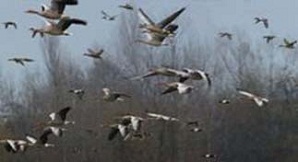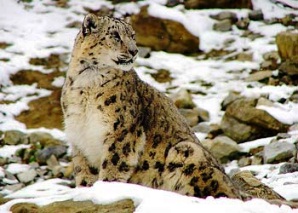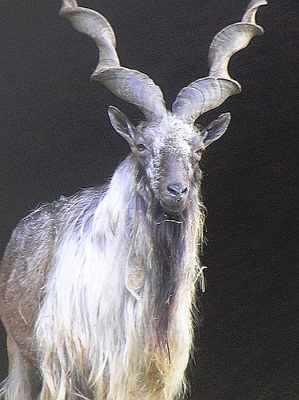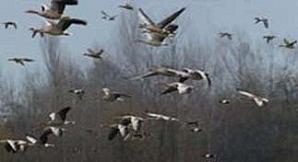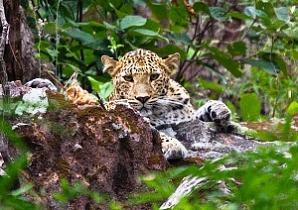Kashmir faces environmental disaster
As the winter sets in, Hokrsar 14 kilometres north of Srinagar the capital city of Kashmir is home to migratory birds; visitors from Siberia and other regions of Central Asia, a thrilling experience for locals and tourists alike. History tells us that the delegations of 14th century Sufi Saints from Iraq and Central Asia were greeted and warmly received by local population to accept Islam as a way of life and Kashmir a home to scores of Sufi Saints is reverently referred to as Pirwaer (Abode of Saints). People groomed spiritually are intrigued to see these birds and consider them as venerated natural guests. The so called unpopular Games hunting of birds or habitat for sports before the times of military occupation was unknown to local population.
Kashmiri officials at Hokrsar assert that comfortable climatic conditions, better protection and the easy availability of food in the region are the prime reasons behind the massive migration of these birds. It is estimated that, this winter, over 900,000 birds have migrated to the reserve. Hundreds of thousands of exotic birds such as Mallards, Greyleg Geese, Gadwalls, Teals, Shovellers, Pochards and Coots are reported making their temporary nests every season. However, a very high concentration of military presence armed with sophisticated weaponry has adversely affected the climate due to felling of trees, easy bird-hunting for food resulting in ecological collapse and imbalance.
Kashmir is a sojourn and dwelling to exotic and beautiful rich wild-life; snow leopard, Markhor (Wild Goat) Cheetah, clouded leopard, black bear and the national animal Hangul. Most of these species are extinct as the practice gunfire or actual combat has either consumed them or are chased away. Some sections of Indian society find the wild animals a delicacy to feed on and believe the meat of these animals to have aphrodisiac effect which causes the arousal of the mood of sexual desire.
An Indian drafted report on Kashmir’s wild-life attributed to some forest guards of Kashmir gives a rosy picture of wild-life protection, conflict management program giving details of earmarked area notification as 15912 sq.km, national parks, wild life sanctuaries and conservation reserves managed on scientific basis, a very encouraging scenario. The total Markhor population officially claimed to be around is just 50 and all other species of wild-life habitat enriching the environment in the past has not been mentioned anywhere and no one knows if the species really do exist.
Forest denudation, felling of trees has been a major concern for locals and the timber illegally exported to Indian cities transported in empty trucks initially convoys carrying in military hardware supplies for Indian army stationed in every nook and corner of Kashmir State. It is an accepted norm in the army that huge bribes are paid by army personnel for a posting in Kashmir as the job apart from double or treble salary, the income from ´other sources´ is more than welcome. Thousands of returning supposedly “empty trucks” are immune from any search and cannot be stopped at any Custom, Octroi or a Check-post.
More than a million strong army; deployed in Kashmir is to keep a vigil on all civilian dwellings so that the populace does not venture out to repeat 1989 two million long march to UN office to register their political grievances. The claims of returned peace does not seem to be enough to remove army bunkers facing residential houses in every street, lanes or by-lanes. Indian defense minister Shinde conveniently calls it chhota motta teeny-weeny peace which, according to the minister, is not enough to remove army.
The waste generated by army and its Para-military troops is unprecedented and the disposal of such a waste is beyond the means of the local government. The widespread army presence, especially in sub-zero temperatures, in order to keep themselves warm due to lack of facilities in remote areas enhances the need to axe the forests at the cost of Kashmir’s environment.
The live-stock, vegetables and other foods for which Kashmir was self-sufficient before the occupation is now totally dependent on imports from Indian cities leading to a drain on local resources and enriching the economies of Indian cities. Kashmir predominantly a rice-eating nation self-sufficing now imports rice from India. It is noteworthy that Kashmir has the capacity to grow enough paddies to meet its internal requirement and the surplus can feed a few states of north India.
Kashmir’s healthy world famous orchids growing apples, grapes, apricot, cherries, almonds, figs, walnuts to name the few and scores of other fruit plants have been attacked by unknown disease Scab (crustlike lesions on the affected parts caused by a fungus or bacterium). It is widely believed that the diseases, intriguingly, were imported from outside to promote the produce available elsewhere in India.
The only match factory, pride of Kashmir running successfully in Baramulla, 40km from the capital Srinagar was closed way back in early fifties and since then any other industry or factory worth the name is an effort made by locals under the scheme self-help and are struggling. In order to create a comparison, Kashmir’s small hilly province Jammu has reasonably good industrial development as all the help, financial, raw-material and know-how provided is considered as a safe investment due to common ethnic bond and faith.
The lovers of environment all over the world must join hands with like minded souls to condemn the deliberate damage done to this paradise on earth.
Comments
There are 0 comments on this post


